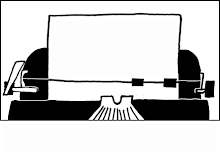National Uprising
National Uprising
Introduction
When people are oppressed, they are likely to rise up against the oppressor. There was never a popular uprising in Tibet until the 1950s. Tibetan resistance movement against the Chinese started right from the time of invasion. By 1956 open fighting broke out in the Eastern Tibetan provinces of Kham and Amdo. Three years later the uprising took on national proportions, leading to the massive demonstrations in Lhasa in March 1959, the flight of the Dalai Lama and some 80,000 refugees to neighbouring countries. Tens of thousands of Tibetans were slaughtered by the PLA. Since then, Tibetan uprising and demonstrations have continued. Between 1987 and 1992 alone, there had been over 150 demonstrations in Lhasa and other parts of Tibet, some small but others very large. The Chinese troops suppressed most of these demonstrations with brutal force. In March 1989 Tibet was put under Martial Law for the second time in its history: the first time was in 1959.
The Chinese Government tries to depict the popular resistance of Tibetans as the work of a few disgruntled aristocrats who wish to restore the old system of exploitation and oppression of the Tibetan masses. It depicts 95 per cent of the Tibetans as having been serfs, brutally oppressed by a small number of aristocrats and lamas. What China cannot explain is why these allegedly oppressed masses never rose up against their masters, despite the fact that Tibet did not have a national police force and for most of its history had no strong army. Yet, these same Tibetans did rise up, and still do today, against the massive security apparatus and army of China, knowing the tremendous risk they take. If we look at the social composition of the Tibetans involved in the successive uprisings and demonstrations, more than 80 per cent of them are not aristocrats and high lamas. Furthermore, more than 85 per cent of Tibetans in exile belong to what the Chinese would call "serf class".
National Uprising
Introduction
When people are oppressed, they are likely to rise up against the oppressor. There was never a popular uprising in Tibet until the 1950s. Tibetan resistance movement against the Chinese started right from the time of invasion. By 1956 open fighting broke out in the Eastern Tibetan provinces of Kham and Amdo. Three years later the uprising took on national proportions, leading to the massive demonstrations in Lhasa in March 1959, the flight of the Dalai Lama and some 80,000 refugees to neighbouring countries. Tens of thousands of Tibetans were slaughtered by the PLA. Since then, Tibetan uprising and demonstrations have continued. Between 1987 and 1992 alone, there had been over 150 demonstrations in Lhasa and other parts of Tibet, some small but others very large. The Chinese troops suppressed most of these demonstrations with brutal force. In March 1989 Tibet was put under Martial Law for the second time in its history: the first time was in 1959.
The Chinese Government tries to depict the popular resistance of Tibetans as the work of a few disgruntled aristocrats who wish to restore the old system of exploitation and oppression of the Tibetan masses. It depicts 95 per cent of the Tibetans as having been serfs, brutally oppressed by a small number of aristocrats and lamas. What China cannot explain is why these allegedly oppressed masses never rose up against their masters, despite the fact that Tibet did not have a national police force and for most of its history had no strong army. Yet, these same Tibetans did rise up, and still do today, against the massive security apparatus and army of China, knowing the tremendous risk they take. If we look at the social composition of the Tibetans involved in the successive uprisings and demonstrations, more than 80 per cent of them are not aristocrats and high lamas. Furthermore, more than 85 per cent of Tibetans in exile belong to what the Chinese would call "serf class".



Recent Posts
BBC NEWS | World | Asia-Pacific | Tibet meeting hi... Erowid Online Texts : TiHKAL #53 T A quotation fro... Erowid Online Texts : TiHKAL #53 T The sale of try... BBC NEWS | World | Middle East | Iran vows to hono... Election special: Internet used in campaign for Fl... BBC NEWS | Technology | Conflict against Iraq begi... BBC NEWS | Technology | Conflict against Iraq begi... BBC NEWS | World | Africa | US threatens world pea... News Reader: Monkey Business This seems to bother ... Truth Hurts